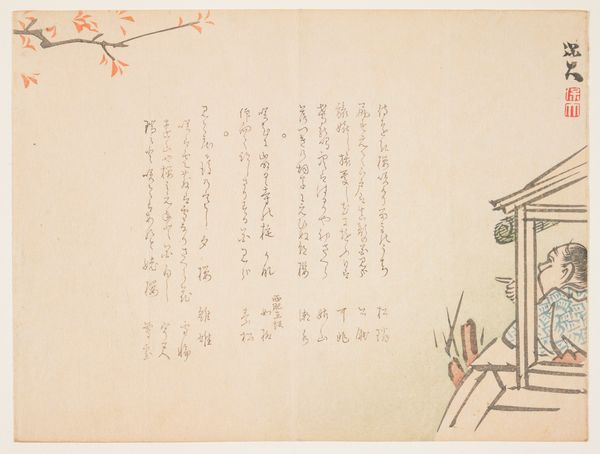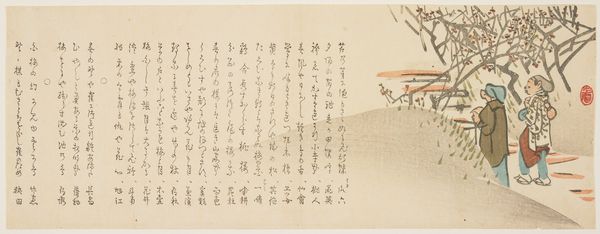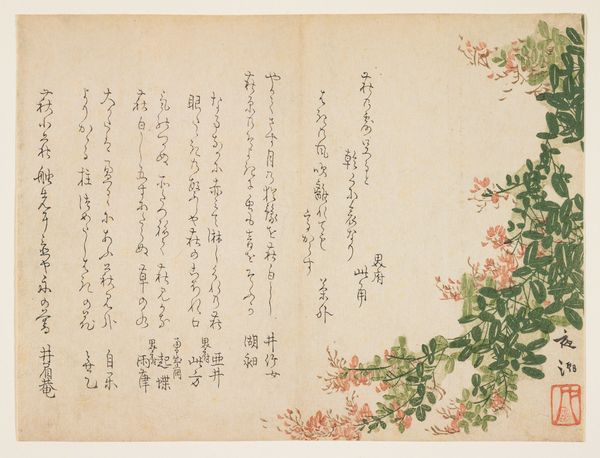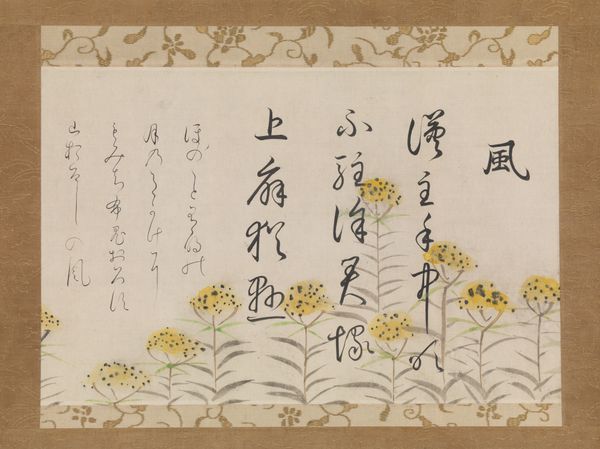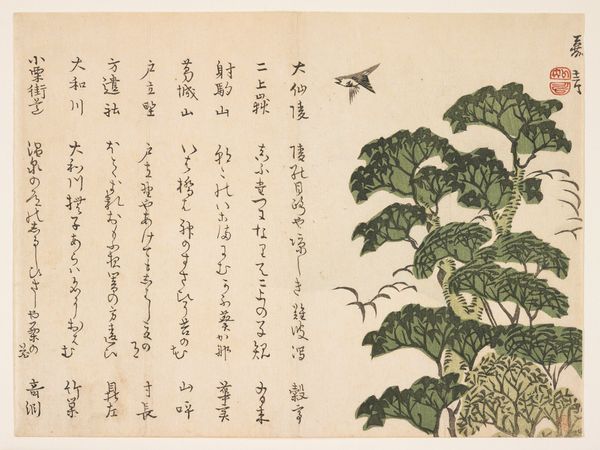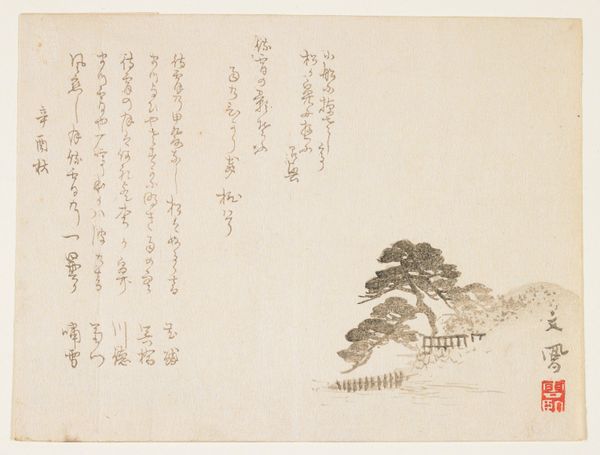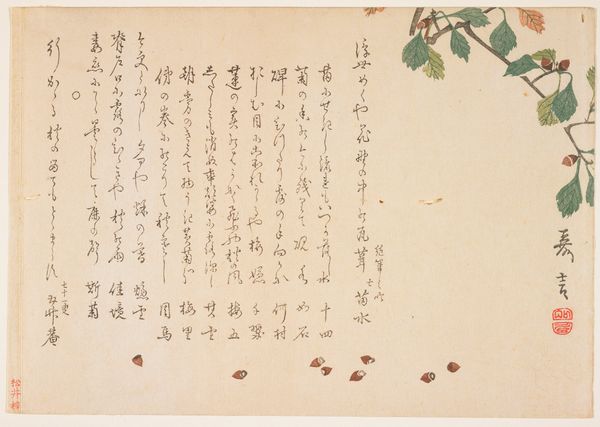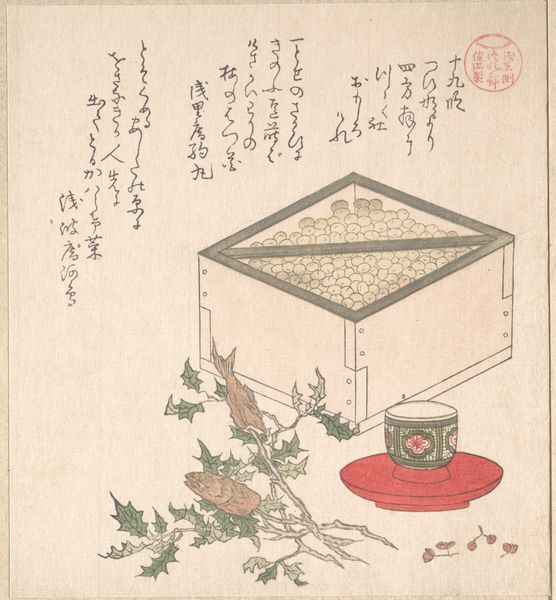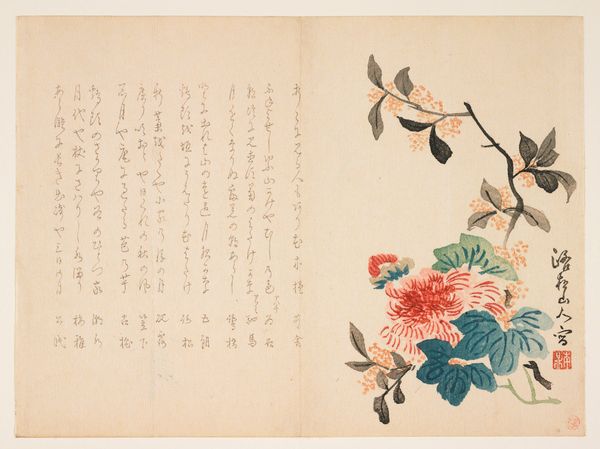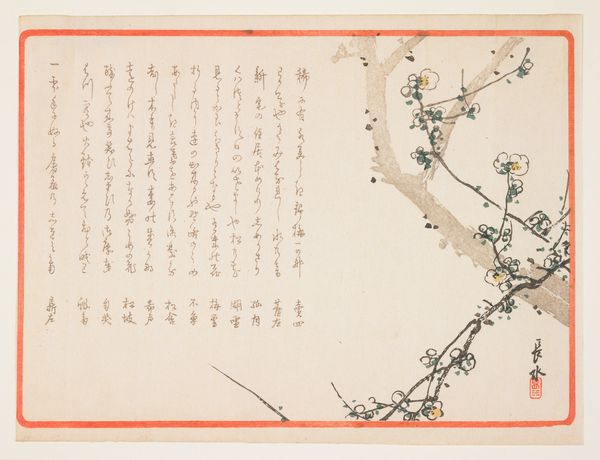
drawing, print, ink
#
drawing
# print
#
asian-art
#
landscape
#
ink
Dimensions: 7 1/8 x 9 7/8 in. (18.1 x 25.1 cm) (image, sheet)
Copyright: Public Domain
Okabe Nampo produced this print of a farmhouse and trees at an unknown date using woodblock and ink. It exemplifies the traditional Japanese art form of Ukiyo-e, or "pictures of the floating world." Ukiyo-e emerged during the Edo period, from the 17th to 19th centuries, when Japan experienced relative peace and prosperity. This allowed for a flourishing urban culture, particularly in the pleasure districts. The art, commissioned largely by the merchant class, often depicted scenes of everyday life, landscapes, and popular entertainment. The image creates meaning through visual codes and cultural references related to the natural world, such as the trees and pastoral architecture. The script, known as calligraphy, also represents a cultural tradition. To understand this work better, we could research the Edo period and the role of Ukiyo-e in reflecting its social values. Art history emphasizes the social and institutional contexts that shape artistic production and the way that we view art over time.
Comments
No comments
Be the first to comment and join the conversation on the ultimate creative platform.
